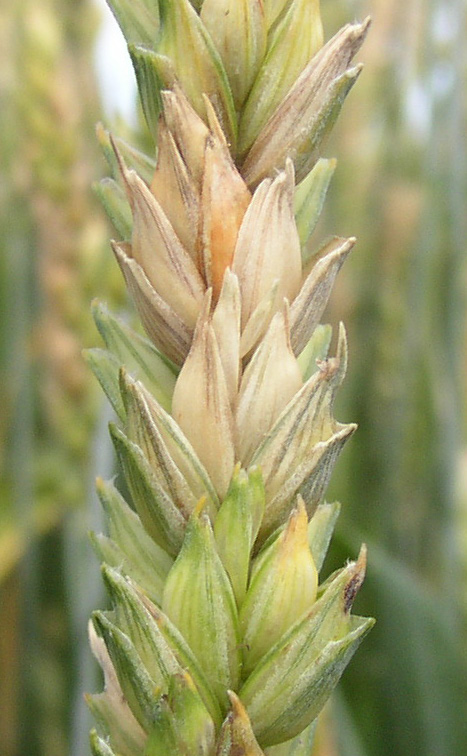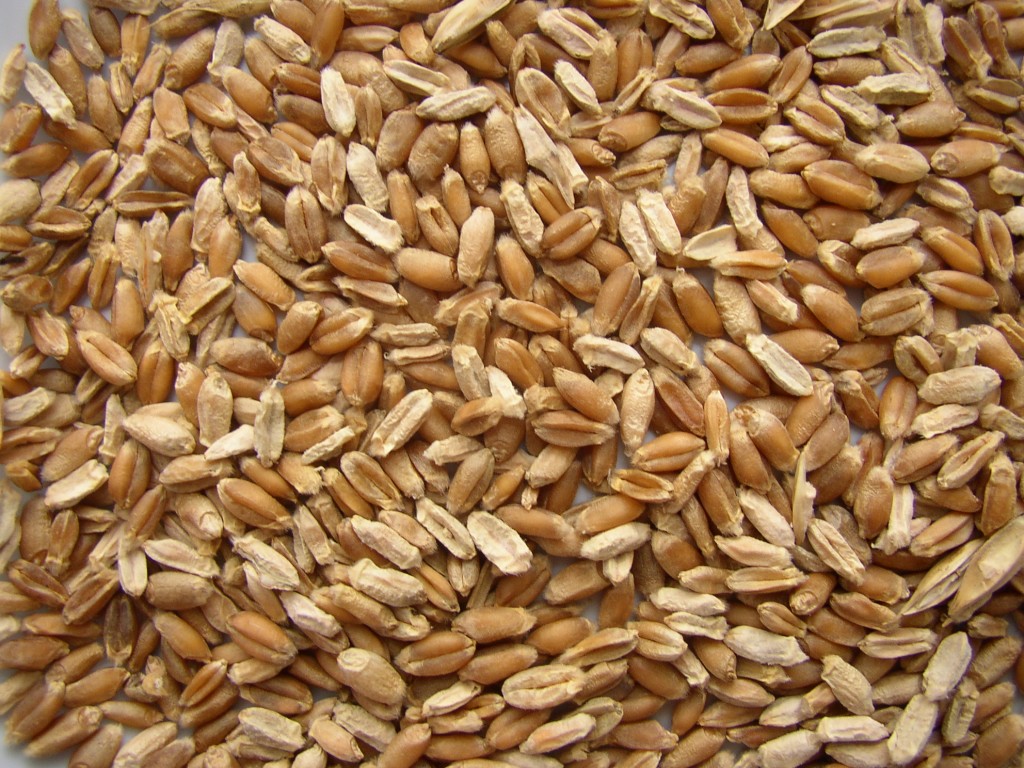
Fusarium Head Blight or head scab is the most important disease of wheat in the Midwestern U.S. FHB is caused primarily by the fungus Fusarium graminearum (also known as Gibberella zeae). This disease causes significant yield loss, reduced grain quality and contamination of grain with mycotoxins, which are toxic to humans and livestock. Fusarium graminearum produces the mycotoxin deoxynivalenol (DON), also known as a vomitoxin because it induces vomiting and refusal to eat in livestock. The FDA regulates DON levels in wheat at 1ppm for human consumption and 5-10ppm for animals.

FHB infects the heads at flowering time. Weather during this time has the greatest influence on development of the disease. Damp and warm conditions increase infection. Signs of infection are seen a few weeks after heading, with bleached spikelets that spread through the head. Pinkish spores may be seen on infected spikelets as the disease progresses. The infected kernels appear shrunken, pinkish, lightweight, or ‘tomb-stone’ like.
